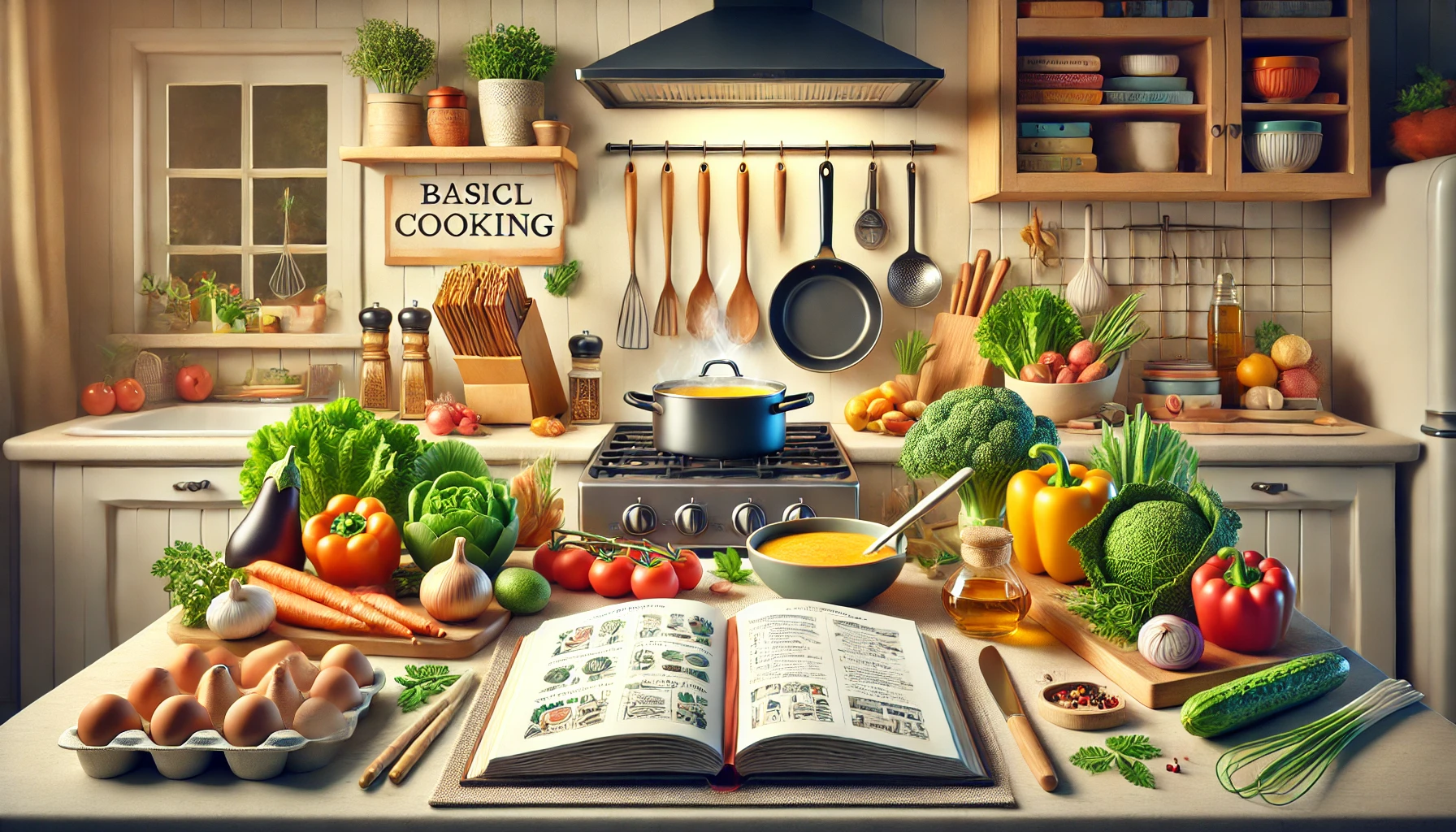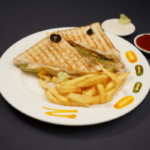Cooking at home is more than just a necessity; it’s a passion, an art form, and a way to bring people together. Whether you’re a beginner or an experienced home chef, there’s always something new to learn in the world of culinary arts. This guide is designed to help you understand the basics of cooking while also diving deeper into techniques, tips, and tricks to master your kitchen.

Why Cooking is an Essential Skill
Cooking is a vital life skill that goes beyond just feeding yourself. It encourages creativity, allows you to eat healthier, and can even save you money. When you cook at home, you control the ingredients, the portion sizes, and the method of preparation. Plus, there’s a special satisfaction in serving a meal you made from scratch.
Understanding the Basics: Cooking Methods
There are several foundational cooking techniques that every aspiring chef should know. Here’s a breakdown of the most essential methods:
1. Boiling
Boiling is a very simple way to prepare food. It’s used for preparing pasta, vegetables, and grains. When boiling, always make sure to use enough water to cover the food, and add a pinch of salt to enhance the flavors.
2. Sautéing
Sautéing means cooking food rapidly with a small amount of oil over intense heat. This technique is perfect for vegetables, thin cuts of meat, and seafood. The key to sautéing is maintaining a high temperature and constantly stirring or flipping the food to ensure even cooking.
3. Grilling
Grilling imparts a smoky flavor to your food, making it a popular choice for meats, vegetables, and even fruits. It’s a healthy cooking method since it allows fat to drip away from the food. The high heat seals in the juices, resulting in tender, flavorful dishes.
4. Baking
Baking is used primarily for bread, pastries, and other desserts, but it can also be a great method for roasting vegetables or cooking fish and chicken. Preheating the oven to the correct temperature is crucial to ensure even cooking and the desired texture.
5. Steaming
Steaming is one of the healthiest cooking methods as it preserves nutrients and doesn’t require any added fats. It’s ideal for vegetables, fish, and dumplings. A steamer basket or a dedicated steamer appliance can be used for this method.
6. Roasting
Roasting involves cooking food, typically meat or vegetables, in the oven at high temperatures. This method caramelizes the outside of the food, adding depth and flavor. It’s a hands-off technique that lets the oven do the work while you prepare other elements of the meal.
Essential Ingredients Every Kitchen Needs for Cooking
Stocking your kitchen with essential ingredients is key to making cooking at home easier and more enjoyable. These ingredients will serve as the building blocks for countless recipes.
Pantry Staples
Olive oil: Perfect for cooking and dressing salads.
Garlic and onions: These aromatic vegetables form the base of many savory dishes.
Spices and herbs: Keep essentials like salt, pepper, cumin, paprika, and oregano on hand.
Rice, pasta, and grains: Versatile carbohydrates that can be paired with proteins or veggies.
Canned tomatoes and beans: Great for making soups, stews, and sauces quickly.
Fresh Ingredients for cooking at home
Vegetables: Stock up on leafy greens, carrots, bell peppers, and zucchini.
Fruits: Apples, bananas, and citrus fruits make for quick snacks or dessert additions.
Proteins: Eggs, chicken, fish, and tofu are staples for a balanced diet.
Dairy: Milk, cheese, and yogurt can be used in a variety of recipes.
Freezer Essentials
Frozen vegetables: A quick way to add greens to any meal.
Meat: Having a supply of chicken, beef, or fish in the freezer is convenient for meal prep.
Broths: Homemade or store-bought, broths are the foundation for soups and sauces.
Healthy Cooking Tips for Beginners
Cooking healthy meals doesn’t have to be difficult. Here are a few tips to help you maintain a balanced diet while keeping your meals delicious:
1. Focus on Whole Foods
Whole foods like fruits, vegetables, whole grains, and lean proteins should form the majority of your meals. Stay away from processed foods, as they often have added sugars, unhealthy fats, and preservatives.
2. Use Healthy Cooking Methods
Opt for cooking methods like grilling, baking, steaming, or roasting over frying. These methods retain the nutritional value of the food and require less added fat.
3. Control Portion Sizes
Learning to manage portion sizes is a critical part of healthy eating. Use smaller plates, measure ingredients when cooking, and avoid going back for seconds unless you’re truly hungry.
4. Flavor with Herbs and Spices
Instead of relying on salt and sugar to flavor your meals, experiment with fresh herbs, spices, and citrus. This can add vibrant flavors without extra calories.
Innovative Cooking Strategies for Budget-Friendly Meals
Cooking at home can save you money, but sticking to a budget doesn’t mean you have to sacrifice taste or variety. Here’s how to get creative with your meals without breaking the bank.
1. Plan Your Meals
Meal planning is the key to saving money and reducing food waste. Prepare a weekly meal plan, make a list of groceries, and ensure you stick to it. This will prevent impulse purchases and help you make the most of what’s in your pantry.
2. Batch Cooking
Make big portions of meals like soups, stews, and casseroles, and store them in the freezer for later. Batch cooking not only saves time during the week but also ensures you always have a healthy meal on hand.
3. Buy in Bulk
Items like rice, pasta, canned goods, and frozen vegetables are often cheaper when bought in bulk. These non-perishable items can be stored for a long time and used in various recipes.
4. Use Leftovers
Get creative with leftovers! Last night’s roast chicken can become a delicious chicken salad or stir-fry the next day. Reducing food waste will save you money and reduce your environmental footprint.
Mastering the Art of Flavor Pairing
One of the secrets to becoming a great cook is understanding how to pair flavors. Here’s a basic guide for cooking at home to common flavor profiles and how to combine them:
Sweet and Salty: Think salted caramel or honey-glazed ham. This pairing creates a balance between richness and sweetness.
Sour and Spicy: Often used in Asian cuisine, the tang of vinegar or citrus mixed with the heat of chilies can elevate a dish.
Umami and Bitter: Mushrooms, soy sauce, and Parmesan cheese provide umami, which pairs well with the bitterness of greens like kale or spinach.
Experimenting with different flavor combinations will enhance your cooking and help you discover your personal preferences.
Cooking for Family and Friends: The Joy of Shared Meals
Cooking is more enjoyable when shared with others. Preparing meals for family and friends not only strengthens relationships but also creates lasting memories. Here are a few tips to make your next dinner party or family meal a success:
1. Plan a Balanced Menu
When cooking for a group, it’s important to offer a variety of dishes that cater to different tastes and dietary restrictions. Include a balance of proteins, vegetables, and grains to satisfy everyone at the table.
2. Prepare in Advance
To avoid stress, do as much prep work as possible ahead of time. Marinate meats, chop vegetables, and pre-cook any grains or pasta before your guests arrive.
3. Set the Atmosphere
Presentation matters. Set a welcoming table, play soft background music, and serve dishes family-style to encourage conversation and sharing.
Final Thoughts: Cooking as a Lifelong Journey
Cooking is a skill that evolves over time. It’s not just about following recipes, but also about experimenting, making mistakes, and learning from them. As you become more comfortable in the kitchen, you’ll start to develop your own style and preferences.
Whether you’re cooking at home a simple weeknight dinner or hosting a festive meal, remember that cooking is meant to be fun and rewarding. Embrace the process, enjoy the creativity, and savor the results.
This article covers everything from cooking basics to creative and budget-friendly methods, all while focusing on healthy and flavorful meals. Keep refining your skills, and soon you’ll feel like a master chef in your own kitchen!
As an Amazon Associate, I earn from qualifying purchases.



